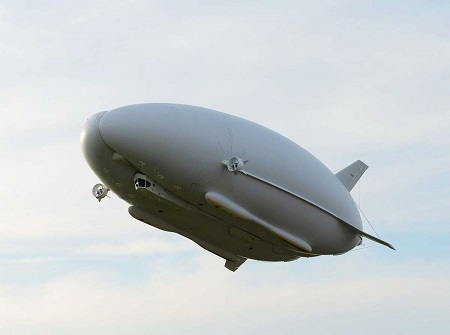 Source: Bedford Today – Bedford Times & Citizen – bedfordtoday.co.uk
Source: Bedford Today – Bedford Times & Citizen – bedfordtoday.co.uk
Hybrid Air Vehicles’ Airlander has been hailed as the leading aerospace innovation of the year in two major awards.
US magazine Popular Science gave one of the Best of What’s New award in its Aerospace category yesterday, while in October the aircraft received The Honourable Company of Air Pilots Sir Barnes Wallis Medal in recognition of its “exceptional and innovative contribution to aviation”.
HAV is one of just a handful of companies to have won the medal in 35 years.
Cardington-based HAV CEO Stephen McGlennan said: “The Airlander will revolutionize air travel and we’re delighted we have been honored with these awards that validate our technology.”
The 92 meter airship will make its first UK test flights from Cardington hangars next year.
Source: Bedford Today – Bedford Times & Citizen – bedfordtoday.co.uk
Source: Popular Science – Best of What’s New – popsci.com
Hybrid Air Vehicles Airlander – Best of What’s New (Aerospace)
Monster blimp
By Eric Adams and Sophie Bushwick
Hybrid Air Vehicles Airlander
The Airlander may be the world’s longest and largest aircraft, but it’s the craft’s unique shape that makes it revolutionary: It provides 40 percent of the vessel’s aerodynamic lift (the rest comes from helium)—enough to keep 10 tons of cargo and a full crew aloft for five days. With its long airborne time and its ability to land on any flat surface, the blimp-zeppelin hybrid is the perfect vehicle for humanitarian, border patrol, transport, and search-and-rescue missions.
Source: Popular Science – Best of What’s New – popsci.com
Source: The Honourable Company of Air Pilots – airpilots.org
The Sir Barnes Wallis Medal
Awarded in recognition of an exceptional and innovative contribution to aviation.
2013/14 awarded to: HYBRID AIR VEHICLES
It is fitting in the 35th anniversary year of Barnes Wallis’ death that one of his major aviation innovations is celebrated in its modern form. Barnes Wallis was instrumental in getting the British Airship industry started with his contribution to the R100. In recent years, the lighter-than-air industry has taken off again, led by a British SME, Hybrid Air Vehicles Ltd (HAV). This has finally solved a number of the problems with mainstream airships outlined by Barnes Wallis in the post-war years.
Since 2007, HAV has designed, developed, assembled and flown an entirely new type of aircraft. From a design concept, via a 50 foot demonstrator to a 300 foot aircraft within 25 months. This has been achieved, against the odds, by a single UK SME, against tight time pressure and money constraints. The Airlander flew in 2012 under a US Army program, and the aircraft has now been brought back to the UK for reparation for its first UK flight at the end of 2014.
HAV, technically led by Mike Durham, has created a new type of aircraft by combining aerodynamic lift with aerostatic lift (and adding in vectored thrust for good measure). This hybrid aircraft is inherently more efficient than existing forms of air transport, and therefore has ground-breaking low carbon characteristics, as well as numerous other records. Currently, it is the largest aircraft in the world, with the longest endurance and the biggest hull.
HAV have 21 patents related to technologies of this aircraft, and the innovations are not just the integrated design, but the use of materials (a specific strong and lightweight carbon-fiber and Kevlar weave with a helium-retaining coating make up the hull, which means no internal structure is needed); the retractable skids, which permit all-terrain landing; all-round thrust vectoring providing vertical take-off and landing capabilities using diesel propulsors with ducted fans; fly-by-light throughout; unmanned capability; carbon composite fins and mission module; and a modular payload capability. All of these are innovations in their own right.
As background, Sir Barnes Wallis suggested that the issues that needed solving for airships to be viable were:
- Better retention of the lifting gas (which he said should be helium not hydrogen),
- Improved fabric properties for the envelope or hull material allowing non-rigid airships to increase in size,
- Utilization of composites and plastics to reduce weight and hence improve the payload capacity,
- Develop a full authority vectored thrust system to aid in take-off and landing maneuverability,
- Improve the flight control system to give the pilot better control of the vehicle.
All of these have now been solved by HAV, and have permitted a hybrid aircraft not reliant on mooring masts and huge ground support (which other airships still need) and thus giving it flexibility on range and tasks undertaken.
For this exceptional and innovative development in aviation, Hybrid Air Vehicles is awarded the Sir Barnes Wallis Medal.
Source: The Honourable Company of Air Pilots – airpilots.org


